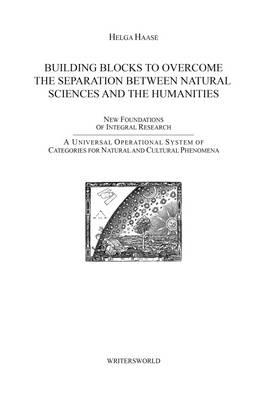Overview
The present work contains a proposal for a foundation of elementary, fundamental terms within philosophy and science, to be built from modal operators. With their help, it will be possible to shed new light on numerous basic problems of modal logic, of the theory of probability, of mathematics, of quantum physics, and of the theory of time. The author, in her decades-long, self-taught course of study, has attempted to take up the weaknesses in expositions related to the basic themes named above, expositions with Aristotle, Frege, Russell, Heisenberg and many others. Furthermore, the author has sought to rectify these weaknesses using her sketch of a constitutional system.With that, the following points are worth noting: - Inconsistencies have been discovered in the definitions (which inform all significant logicians) in the Aristotelian tables of implications regarding modal terms (8); - The system endeavours, with the aid of the modal theoretical definition of unit, to bolster Frege's critique of the current definition of unit (10); - Using the modal theoretical definitions of the point, the thesis makes it possible to eliminate the obvious contradictions in the constructions of the continuum (15) and the theory of time (16); and finally, - The concept of actuality, as derived from the complementarity of necessity and possibility, can offer numerous quantum theorists a plausible explanation for their statements about strings and their properties (14. 6). Helga Haase delivers answers to these and similar questions with her building blocks to overcome the separation between Human Sciences and Natural Science. The author develops objectively scientifically and understandably a new system of categories apt for both in order to solve the ancient problem created by Descartes: the polarization of research into human and natural sciences.
Full Product Details
Author: Helga Haase
Publisher: Helga Haase
Imprint: Helga Haase
Weight: 0.100kg
ISBN: 9780993288005
ISBN 10: 0993288006
Pages: 192
Publication Date: 01 November 2015
Audience:
General/trade
,
Professional and scholarly
,
General
,
Professional & Vocational
Format: Paperback
Publisher's Status: Active
Availability: In Print

This item will be ordered in for you from one of our suppliers. Upon receipt, we will promptly dispatch it out to you. For in store availability, please contact us.
Author Information
Helga Haase, daughter of Krill, was born 1940 in Cimpina/Romania and immigrated to Germany 1944. After school, she completed an apprenticeship, earning a degree in metallography. She was trained and later employed at the Research Institute for Precious Metals in Schwabisch Gmund as Head of Metallography. There she developed a new theory of shine, contrary to the teaching of the Institute, see Contribution to the building of shining sediments with electro crystallization 2 and on Structures of the tertiary alloy of Copper-Nickel-Palladium at temperatures of 400degreeC to 700degreeC 1. From 1960 to 1970, she undertook department research for OSRAM Studiengesellschaft Without ever having been trained on the electronic microscope, she managed to develop methods of preparing specimens which, according to specialists, were not possible to prepare. The methods were published in Praktische Metallographie, in a piece entitled Die Herstellung von Abdrucken spezifisch schwerer Metallpulverpartikel fur die elektronenmikroskopische Abbildung 3. In 1970, she married B. Haase, Dipl. Kfm (MBA Business Administration), and then had three children: Nadine (1970), Eiko (1971), and Andy (1975). From 1974 - 1975, Mrs. Haase designed the family home on Spessartweg 4, Schwabisch Gmund, which was afterward constructed. In 1991, the family applied for the restitution of land in East Germany formerly owned by Mrs. Haase's husband's family. She was put in charge of the land restitution and she registered her own consultation business, which ended in 1996 when the land was sold. While her research on philosophy had already started in the early 1960s and has steadily continued since then, her real writing on the subject first began in 1994, producing an initial concept in 1999. After her immigration to Thailand in 2009, she finished her book and prepared it for printing, opening an official website in 2011 to present her ideas to the public. The present work contains a proposal for a foundation of elementary, fundamental terms within philosophy and science, to be built from modal operators. With their help, it will be possible to shed new light on numerous basic problems of modal logic, of the theory of probability, of mathematics, of quantum physics, and of the theory of time. The author, in her decades-long, self-taught course of study, has attempted to take up the weaknesses in expositions related to the basic themes named above, expositions with Aristotle, Frege, Russell, Heisenberg and many others. Furthermore, the author has sought to rectify these weaknesses using her sketch of a constitutional system. With that, the following points are worth noting: - Inconsistencies have been discovered in the definitions (which inform all significant logicians) in the Aristotelian tables of implications regarding modal terms (8);- The system endeavours, with the aid of the modal theoretical definition of unit, to bolster Frege's critique of the current definition of unit (10);- Using the modal theoretical definitions of the point, the thesis makes it possible to eliminate the obvious contradictions in the constructions of the continuum (15) and the theory of time (16); and finally,- The concept of actuality, as derived from the complementarity of necessity and possibility, can offer numerous quantum theorists a plausible explanation for their statements about strings and their properties (14.6). Helga Haase delivers answers to these and similar questions with her building blocks to overcome the separation between Human Sciences and Natural Science. The author develops objectively scientifically and understandably a new system of categories apt for both in order to solve the ancient problem created by Descartes: the polarization of research into human and natural sciences.




